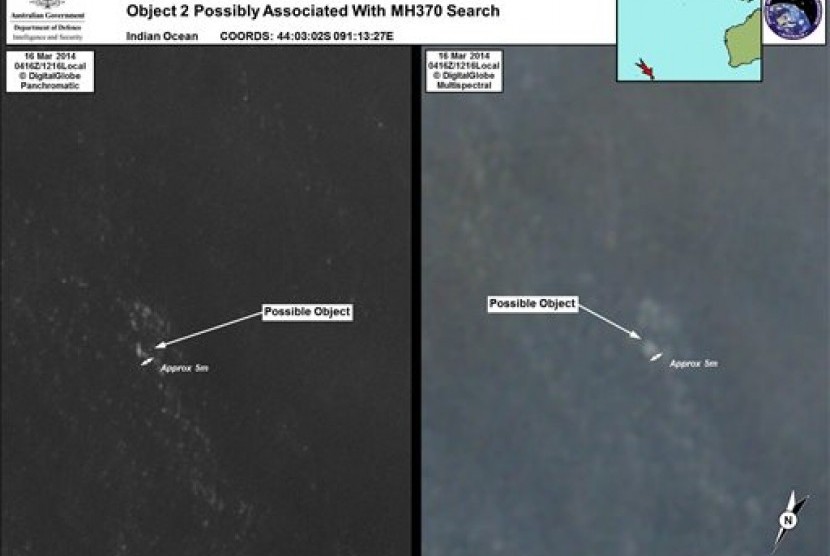REPUBLIKA.CO.ID, KUALA LUMPUR - An air search in the southern Indian Ocean for possible objects from the missing Malaysia Airlines plane described as the "best lead" so far ended for the day without success Thursday but would resume in the morning, Australian rescue officials said.
A statement from the authority said the four planes searched an area of 23,000 square kilometers (8,800 square miles) about 2,500 kilometers (1,550 miles) southwest of Perth on Thursday without success. The area is about halfway between Australia and desolate islands off the Antarctic.
"The search will continue on Friday," it said. It earlier said the search had been hampered by low visibility caused by clouds and rain.
The four planes were checking to see if two large objects spotted in satellite imagery bobbing in the remote ocean were debris from Fight 370 that disappeared March 8 with 239 people on board.
One of the objects was 24 meters (almost 80 feet) in length and the other was 5 meters (15 feet). There could be other objects in the area, a four-hour flight from Australia's southwestern coast, said John Young, manager of the Australian Maritime Safety Authority's emergency response division.
"This is a lead, it's probably the best lead we have right now," Young said. He cautioned that the objects could be seaborne debris along a shipping route where containers can fall off cargo vessels, although the larger object is longer than a container.
News that possible plane parts had been found marked a new phase in the emotional roller coaster for distraught relatives of the passengers, who have criticized Malaysia harshly for not releasing timely information about the plane. While they still hope their loved ones will somehow be found, they acknowledged that news of the debris could mean the plane plunged into the ocean.
But some analysts said the debris is most likely not pieces of Flight 370. "The chances of it being debris from the airplane are probably small, and the chances of it being debris from other shipping are probably large," said Jason Middleton, an aviation professor at the University of New South Wales in Sydney.


